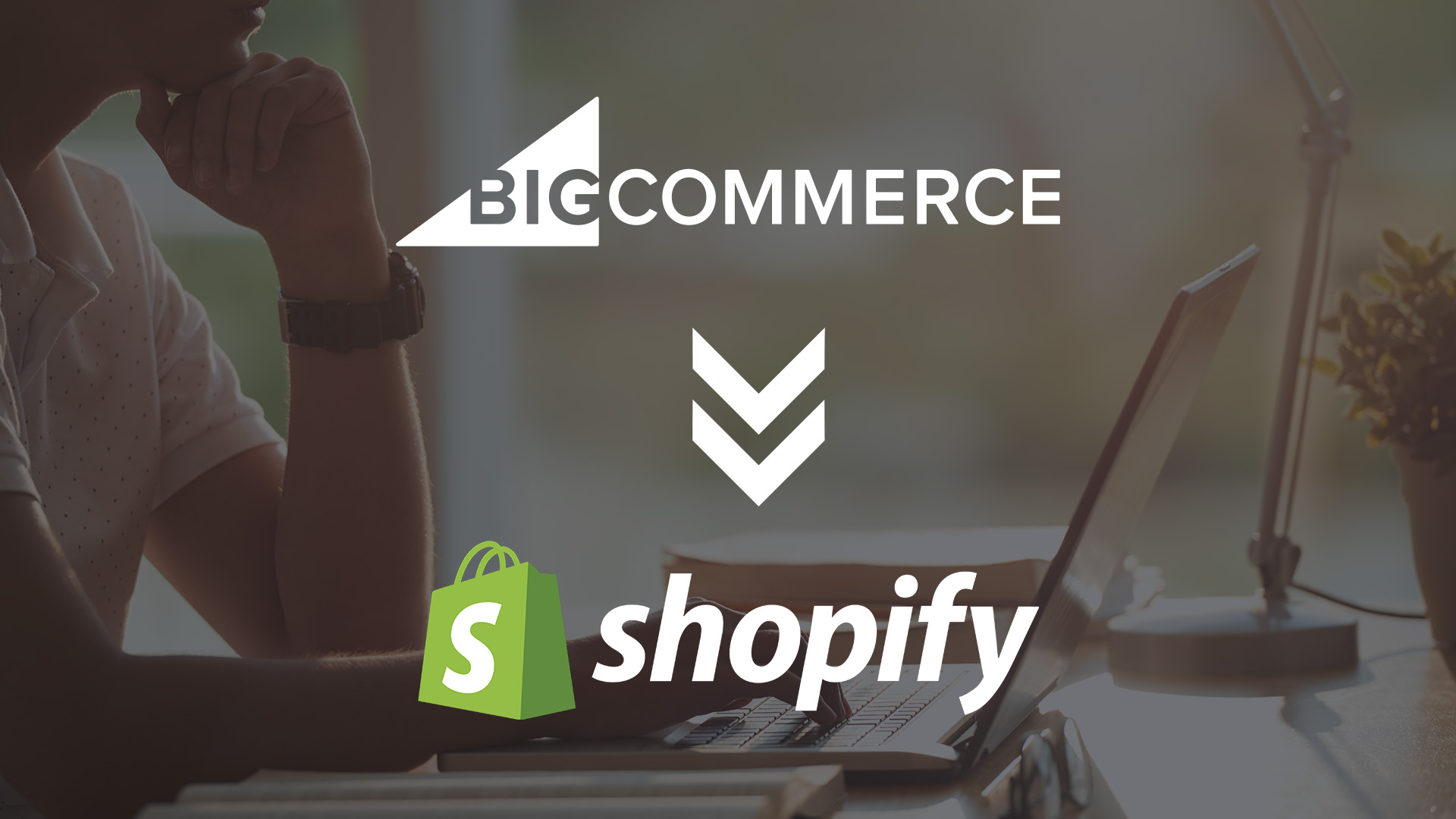Have you outgrown Bigcommerce and set your sights on Shopify's extensive app store and user-friendly interface?
Perhaps you are just looking around to compare options and are considering a change.
Maybe the pricing structure of BigCommerce no longer aligns with your needs and business investment guidelines.
Whatever the reason, migrating over to Shopify from BigCommerce can be an efficient decision and one that your business will need to prosper and grow.
Join us at Groove as this guide will equip you with the knowledge necessary to make the switch and provide a clear and definitive step-by-step guide to making the transition smoothly.
Migrate BigCommerce to Shopify: Why Should We Consider It?
Before you and your team decide to make the switch, it is necessary first to understand the benefits of doing so in the first place.
BigCommerce does have its advantages and disadvantages, but Shopify may prove to be a better match after all.
Here are the top 4 reasons to migrate BigCommerce to Shopify:
- Simple Interface: Shopify has a user-friendly and intuitive interface, making it easier for you or your store owner to manage products, shipping, orders, fulfillment, and marketing campaigns. This is especially effective if you don't have a dedicated IT team and need a lot of back-end support.
- Extensive App Store: Shopify enlists a vast app store full of tools and functionalities to enhance your store's abilities to serve your customers. Apps can help with marketing automation and abandoned cart recovery while also providing you with advanced analytics and shipping solutions; you'll find an app to address virtually every need.
- Transaction Fees: Shopify has a wide array of plans that come with many options, granting you the freedom to choose a simple plan or a customized solution for your business. You may find that your store is more cost-effective by selecting one of their plans. Risk is initially limited due to their expansive options of free and low-paid starting packages.
- Community Support: Shopify benefits from a large and active community of developers, designers, and entrepreneurs. The Shopify brand has become synonymous with online excellence. This brand recognition translates to readily available resources, tutorials, and forums to troubleshoot any issues you might encounter.
The Migration Process: A Step-by-Step Guide
Migrating your store from BigCommerce to Shopify can be broken down into 4 key stages. Remember, while this guide provides a roadmap, the specific steps may vary depending on the layout and specific topology of your store's data and the chosen migration method.
- Plan and Prepare: Before diving in, decide what you want your new Shopify store to achieve. Then, back up all your BigCommerce data (products, customers, orders, mailing lists, and other important data) for safety. Select a migration method: Shopify's import tool, a third-party app, or manual migration (for small stores).
- Set Up Your Shopify Store: Sign up for a Shopify plan that fits your needs. This can be changed down the road, so you don't have to make the perfect decision just yet! Browse their theme store to find a design that reflects your brand and has the needed features. Don't forget to connect your preferred payment gateway to accept customer payments.
- Migrate Your Data: Export your BigCommerce data while maintaining a backup in safe storage. In this step, you will execute and migrate BigCommerce to Shopify effectively through your chosen method.
- Post-Migration Tasks and Analysis: Once everything's imported, test your store thoroughly. Make sure products, cross-selling, item description, buttons, checkout, and discounts work as expected. Set up redirects from your old BigCommerce URLs to your new Shopify URLs, so you don't lose SEO ranking or cause frustration in your repeat clients. Finally, double-check your data to ensure everything is transferred accurately.
- Here's an extra tip: Review and update your SEO settings within Shopify. This includes optimizing product descriptions with relevant keywords, editing your store's meta descriptions and title tags, and setting up a sitemap for search engines to crawl.
Why Partnering with an Agency Makes Sense
While migrating from BigCommerce to Shopify can be done independently, partnering with an experienced eCommerce agency offers substantial advantages:
- Expertise and Efficiency: Expert agencies possess the knowledge and experience to handle complex migrations efficiently, saving you time and minimizing disruption to your business.
- Data Security and Accuracy: You can rest assured that your data is migrated securely and accurately, minimizing the risk of errors or data loss.
- Customization and Optimization: Agencies can help you customize your Shopify store to match your brand and optimize it for conversions perfectly.
- Ongoing Support: A good agency won't leave you alone; they will provide ongoing support as growth obstacles inevitably appear at your door.
Breathe Easy When You Migrate BigCommerce to Shopify with Groove Commerce
Migrating your online store can feel like a high-wire act. You want a flawless transition when you migrate BigCommerce to Shopify, but the technical aspects and potential pitfalls might leave you feeling unsteady. Partnering with an experienced eCommerce agency like Groove Commerce can transform your BigCommerce to Shopify migration into a smooth, stress-free experience.
Our team of eCommerce development experts has a proven track record of guiding businesses through complex migrations. We'll handle everything from data transfer and store setup to SEO optimization and ongoing support.
Ready to capture new customers and propel your business forward? Don't settle for a bumpy migration journey. Book a free consultation with Groove Commerce today, and let's discuss how we can make your transition to Shopify a success story!

eBook
BigCommerce vs Shopify:
Everything You Need to Know
Explore tags:
About the author
Subscribe to the Groove Newsletter
Get the latest updates and insights straight to your inbox






